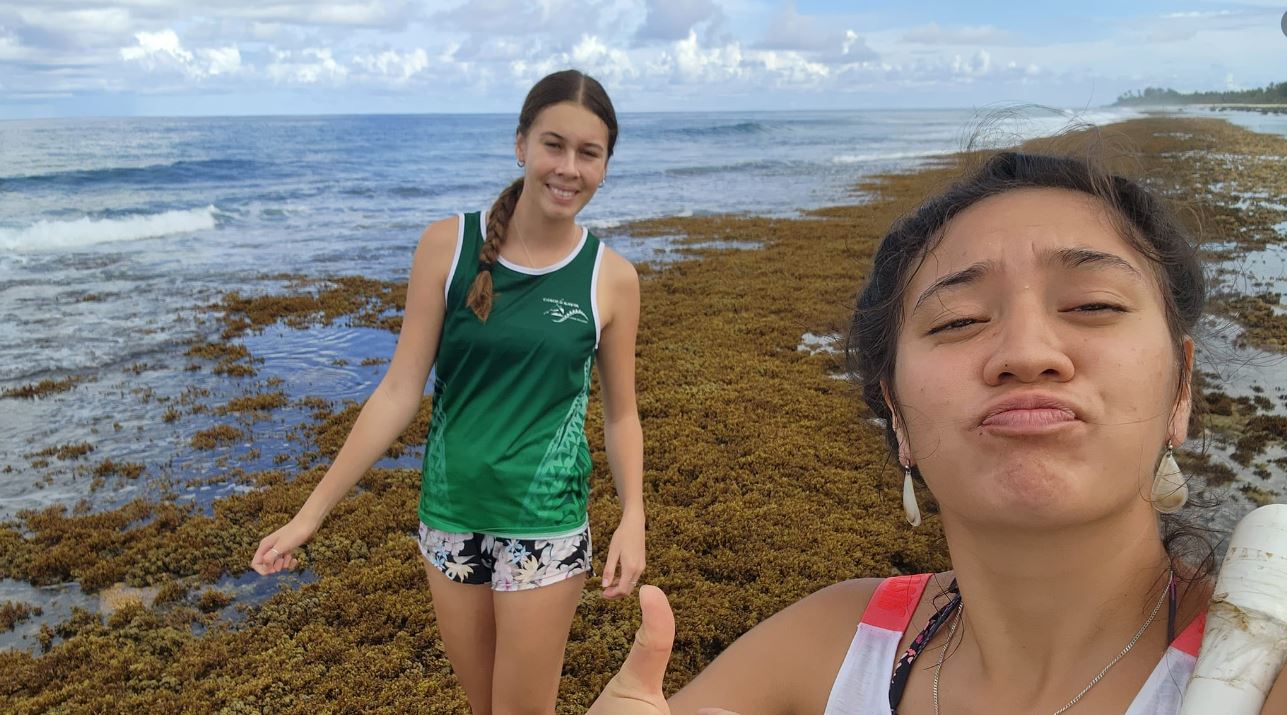Exploring our reef ecosystem
Saturday 25 February 2023 | Written by Te Ipukarea Society | Published in Environment, National

Te Ipukarea Society summer interns Itirangi Pennycook and Esther Short taking a closer look at what life is found on our reef. TIS/ 23022401
We at Te Ipukarea Society are always interested in learning what we might discover whilst out in the field investigating various ecosystems, writes Itirangi Pennycook.
There is always something new to learn or something that is important to preserve. It is good to monitor whether there has been a change in species variety and/or frequency or a shift in the natural area of preferred habitat.
On the Matavera reef, we had our most recent excursion. We called it a ‘Reef Rambling’ exercise since it explores the variety of plant and animal species that are present on our reef. In this instance, it was a minor ramble, primarily to brush up on the various scientific jargon and techniques utilised for this type of data collection. Amanda Torr, Esther Short, Kelvin Passfield, Itirangi Pennycook, and Terena Koteka-Wiki made up our crew of five.
To survey the area, we ran two different types of surveying techniques to measure the abundance of species found. Transect surveys involved using a 20-metre long rope stretched out to count species found 2 metres either side of the rope. A quadrat survey involved using a 1x1 metre squared frame where all species found within the square where counted and identified.
Some of the data we collected were very impressive. For instance, the Rock Burrowing Urchin, also known as Echinometra mathaei (Echinometra being the genus name for many urchins). These are the little, rather oval-shaped, short-spined urchins known as kina. They can be pink, white, or even black in colour. The holes that these have produced in the coral can be found in shallow waters
In 2021, when I was drafting a report on the Echinometra mathei species for biology class at Tereora College, it occurred to me that if the population of this species surges, it might seriously harm the reef. The juveniles make larger burrows into the coral of the reef as they grow, which over time weakens the reef and makes it more susceptible to destruction.
We also examined other species that were widely distributed on the reef, including the Holothurians, also known as the sea cucumber family. There were many diverse species present, including the Actinopyga mauritiana, also known as the Surf Redfish or Rori Puakatoro, the Stichopus chloronotus, also known as the Greenfish or Rori Matie, and the Holothuria atra, also known as the Blood Sea-Cucumber or Rori Toto. Just to give a few examples.
Fun fact: The Cook Islands has no seagrass habitat like in Australia and Fiji. This is due to the fact that we are located just outside of the ideal biological habitat. Algae are the only species of plant that resembles grass and is present on our reef. This can be recognised by the fact that seagrass contains roots, much like land grass does. The algae that are found on our reefs stick to the coral with a foot-like platform on the bottom, called a holdfast.
It’s important to get excited about wanting to learn and explore our marine ecosystem as we rely on this environment for so much such as food. Understanding how a healthy marine ecosystem operates is key to ensuring we continue to care for our marine environment so it can keep giving back to us.




















































